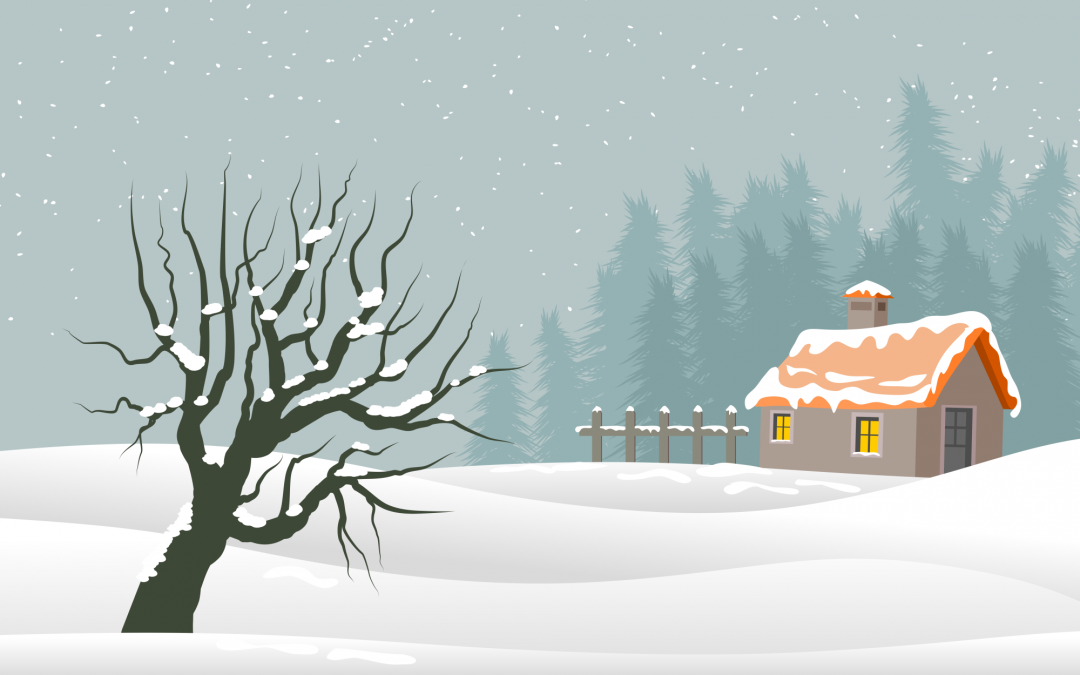We all know the signs: fiery leaves, changing weather, and summer a distant memory.
With another cold Ohio winter creeping up on us, you may already be looking forward to fireplace-filled weekends, holiday fun, and dashing through the snow. Before you get that far, it’s time yet again to prepare for the chilly months ahead.
We’ve put together a home winterization checklist full of tips to help you keep the cold out and your energy bills down. Here’s how to winterize your home.
Check Your Gutters and Downspouts
You’ve heard this before, but it’s hard to overstate it. Ensuring that water flows freely through your gutters and downspouts is a key factor in preventing roof-damaging ice dams. This in turn means you won’t have to work so hard to monitor the icicles that plague our area in the winter months.
It may also be a good idea to install gutter guards. While these tools won’t help prevent ice dams completely, they can alleviate them by keeping debris from accumulating in your gutters.
Inspect the Attic
To better trap the heat in your house during the winter months, make sure your attic is well insulated. Adding a little extra insulation is usually an easy fix, and it can keep your heat from kicking on quite as frequently. If you aren’t sure how much you need, the Department of Energy has a handy insulation fact sheet that offers recommendations by location and climate.
As a general rule of thumb, make sure the temperature of the attic is at least a few degrees warmer than the air outside. While you’re there, you should also do a quick check that the area is well-ventilated.
Insulate Your Windows
According to some estimates, window insulation film can help prevent between 50-70 percent of your home’s heat from dissipating outside. While these may not be very fashion-forward, they can save you a nice chunk of change in the long run.
If you’d rather a more minimal option, weatherstrip tape is a good way to winterize as well, as it can effectively seal the area between the window glass and frame.
Get Draft Guards for Your Door
During the winter, heat escapes under the door—not to mention the chilly winds that can creep inside if you aren’t careful.
One easy way to prevent heat loss is by sealing the space under your door with a draft guard. Whether you buy a retail product or create a DIY version with fabric and insulation, these can help prevent wasted energy.
Seal Cracks in Your Home
Once you’ve sealed the obvious drafty spaces in your windows and doors, it’s time to inspect the rest of your home.
If you notice any drafts elsewhere, try adding some caulk to the area. Caulk can be used around windows and doors, but don’t forget to check the door mail chute (if you have one) as well as openings around a wall or window AC.
Perform Routine Maintenance on Your Heating System
Your HVAC system needs routine maintenance, and this is a great time to pull out your yearly checklist. Book an inspection, change your filter, and update your thermostat’s programming for the new season.
All of these things can help lengthen the unit’s lifespan and efficiency in the long-term while avoiding future heating issues.
Protect Your Pipes
Anyone who’s dealt with frozen pipes knows what a nightmare they can be. To avoid dealing with this headache, be sure to insulate any pipes that might be susceptible to a freeze spell.
Keep in mind that even with insulated pipes, you should still let your faucet drip anytime the temperature drops severely, just to be sure the pipes don’t freeze or burst.
Flush Your Water Heater
We don’t always think of this trick when we consider how to winterize a home, but it’s important to keep in mind. Over time, sediment can build up in your water heater, which means that it has to work harder to keep your water hot—a big issue when all you want is a warm shower.
Most manufacturers recommend that you flush your water heater once every six to twelve months. It’s free if you do it yourself; otherwise, you can always get help winterizing your home by calling a professional.
Prepare Your Driveways and Walkways
Slips and falls are serious health hazards in the winter months. Be sure to minimize your risk by keeping driveways and walkways clear of ice.
You should already have or plan to buy a snow shovel before the worst seasonal weather hits, but consider also stocking up on salt, sand, or calcium chloride to reduce slippage. You can also buy snow-melting mats for any areas around the house with heavy foot traffic.
Get Your Fireplace Ready
If you have a home fireplace, you’re probably looking forward to making good use of it in the coming months. However, before you start hoarding firewood, it’s a good idea to take the time for a little routine chimney and fireplace maintenance.
Clean out the area, including any ash, and remove accumulated debris from the roof. It’s not a bad idea to brush up on your fireplace safety knowledge as well and to check that your smoke alarms work properly.
Go Forth and Winterize Your Home
Ultimately, a little extra forethought now can help save you money and energy later, not to mention boost your overall home safety. And with these tips for winterizing your home, you’ll be able to welcome the coldest months with a little more peace of mind knowing you’re well prepared.
Want to go a step further with your home maintenance? If you haven’t done so already, consider inviting a home inspector to an annual home checkup! We’re more than happy to help you look for further issues and winterize your home.

